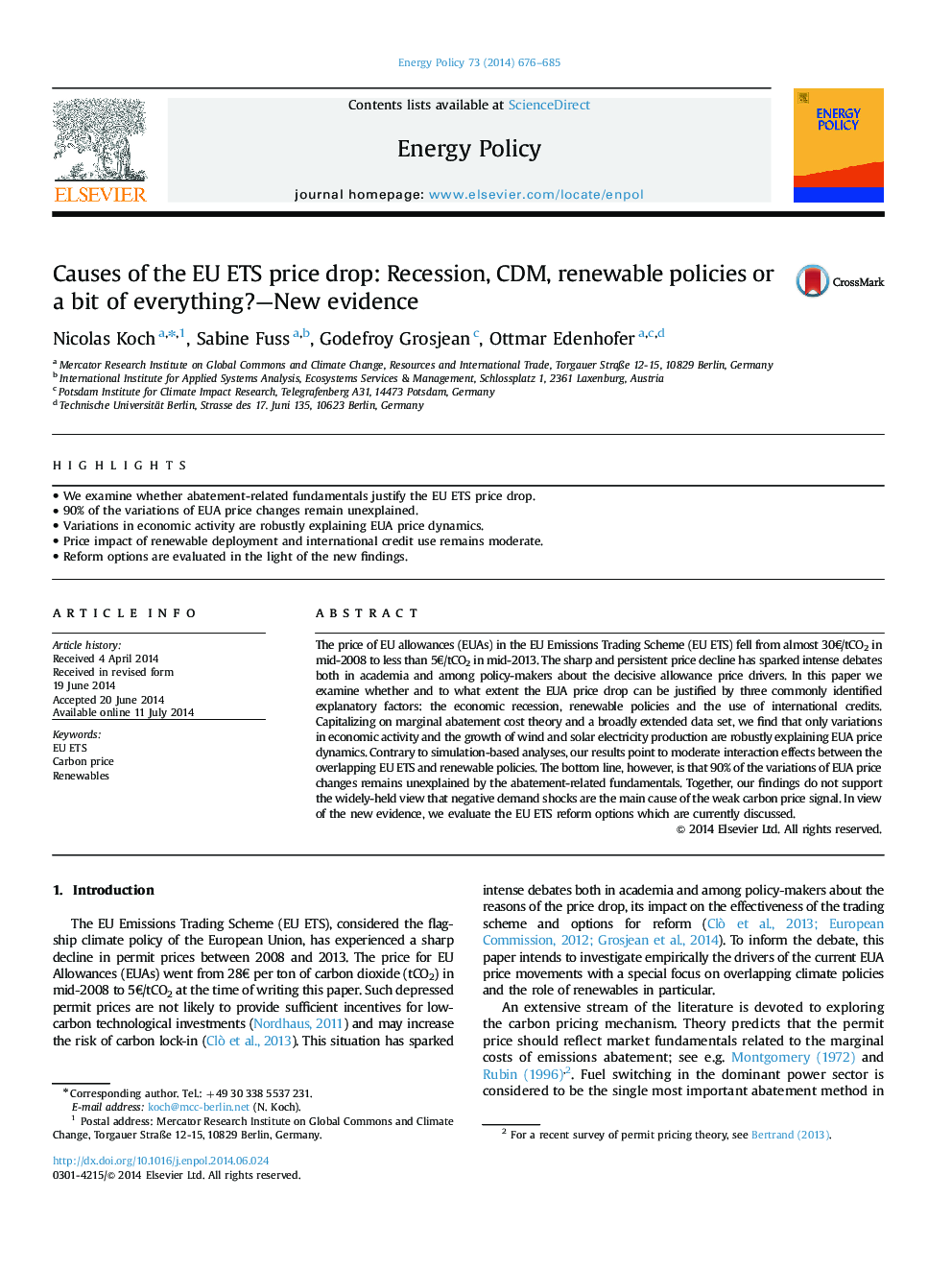| Article ID | Journal | Published Year | Pages | File Type |
|---|---|---|---|---|
| 7402096 | Energy Policy | 2014 | 10 Pages |
Abstract
The price of EU allowances (EUAs) in the EU Emissions Trading Scheme (EU ETS) fell from almost 30â¬/tCO2 in mid-2008 to less than 5â¬/tCO2 in mid-2013. The sharp and persistent price decline has sparked intense debates both in academia and among policy-makers about the decisive allowance price drivers. In this paper we examine whether and to what extent the EUA price drop can be justified by three commonly identified explanatory factors: the economic recession, renewable policies and the use of international credits. Capitalizing on marginal abatement cost theory and a broadly extended data set, we find that only variations in economic activity and the growth of wind and solar electricity production are robustly explaining EUA price dynamics. Contrary to simulation-based analyses, our results point to moderate interaction effects between the overlapping EU ETS and renewable policies. The bottom line, however, is that 90% of the variations of EUA price changes remains unexplained by the abatement-related fundamentals. Together, our findings do not support the widely-held view that negative demand shocks are the main cause of the weak carbon price signal. In view of the new evidence, we evaluate the EU ETS reform options which are currently discussed.
Keywords
Related Topics
Physical Sciences and Engineering
Energy
Energy Engineering and Power Technology
Authors
Nicolas Koch, Sabine Fuss, Godefroy Grosjean, Ottmar Edenhofer,
